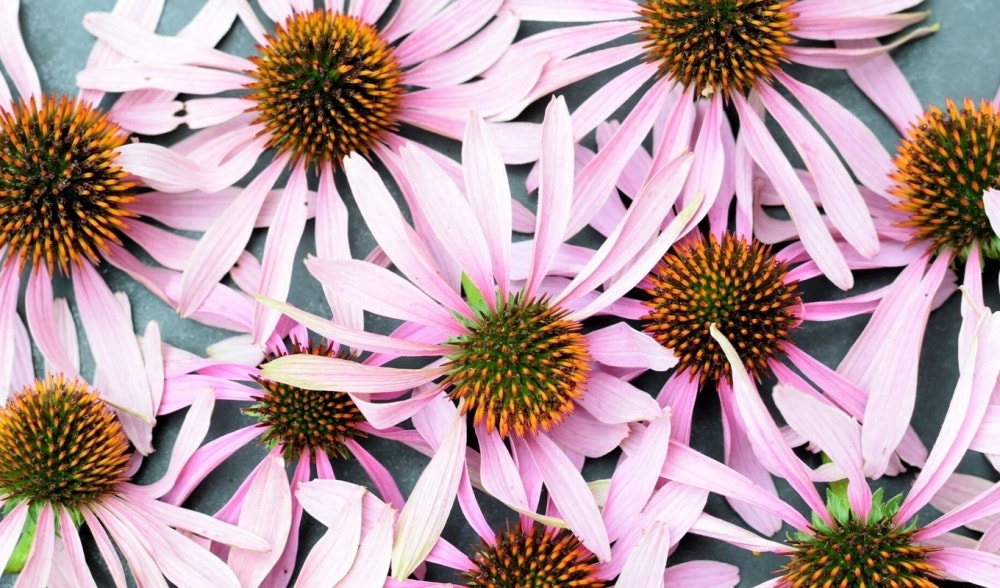Some people are crazy about it and some can't stand it. We are talking about autumn, which brings lower temperatures, shorter afternoons and a great desire to curl up under the bedcovers.
With the beginning of cold weather, seasonal colds also spread, and this is when viruses and bacteria, favored by closed and crowded places, begin to spread.
Fortunately, there are many natural substances that can help us with preventive activity for strengthening the immune system or helping the body fight pathogens in the best possible way. One of these remedies with a natural origin is Echinacea, a plant with beautiful flowers suitable for being taken by adults and children as a supplement.
Echinacea: what is it for?

Echinacea flowers in a field
Echinacea is a perennial herbaceous plant with beautiful bright pink flowers that originates in North America, where it was used by indigenous peoples as a therapeutic remedy. There are 3 species within the genus Echinacea that are distinguished by their phytotherapeutic properties and used in nutraceutical food supplements for adults and children:
- Echinacea pallida
- Echinacea angustifolia
- Echinacea purpurea
The roots and the flowers, similar to large pink daisies, contain the active ingredients, including above all echinaceina, a derivative of caffeic acid, which stimulates the immune system and also carries out an antibacterial, fungicidal and antiviral action.
Properties of Echinacea

Lymphocytes that attack a virus
Thanks to the significant concentration of flavonoids, the plant is also an excellent broadspectrum anti-inflammatory. It should be noted that echinacea also strengthens our immune defense shields against bacteria which infect ears, bronchi, nose, and throat in summer; these become inflamed due to summer changes in temperature (such as those caused by air conditioning or a bath in water that is too cold).
Echinacea has a very interesting antibiotic action, which finds particular application for preventive purposes, making us stronger and more resistant in the event of a greater potential for infection in crowded public places, where it does not take much to transmit germs.
Nevertheless, echinacea is also useful when the first cold symptoms have already appeared. From ear pains to the common sore throat or cold, the plant is able to have a noticeable effect on the activation of macrophages like our "immune emergency response agents", therefore as an antibacterial and anti-inflammatory adjuvant that favors a greater potential of defense in resolving the ongoing problem.
In recent years, research (in particular a study by the University of Cardiff) has presented some interesting confirmations of its effectiveness, where a potential capacity of echinacea to significantly reduce the risk of respiratory infections emerges. Its real action against pathogens has also been confirmed.
In the medical-health field, it is commonly recommended by doctors and pediatricians as a natural, valid and safe remedy for the treatment of colds, coughs, inflammation of the oropharyngeal cavity and bronchitis; in 2015, the European Medicines Agency (EMEA ) expressed a positive opinion.
Echinacea: contraindications
Echinacea is called a safe natural remedy, but it is not indicated in people allergic to plants of the Asteraceae family and it is not possible to use it in the case of therapies with immunosuppressive drugs, precisely because, as an immunostimulant, it would interfere with their action.
Sources:
Committee on Herbal Medicinal Products (HMPC), (2016), Echinacea purpureae herba, European Medicines Agency, https://www.ema.europa.eu/en/medicines/herbal/echinaceae-purpureae-herba
Have you ever tried echinacea to prevent illness? Write about your experience in the comments!


Comments
Write a comment about the article